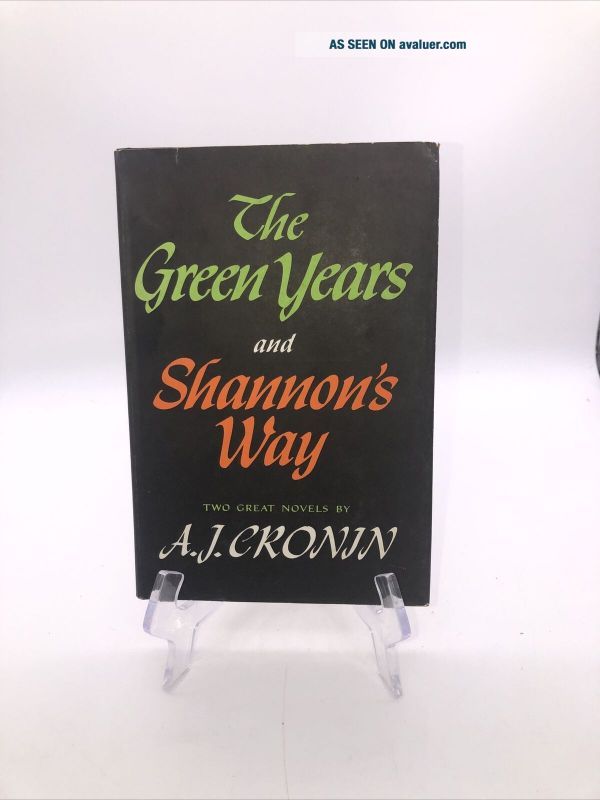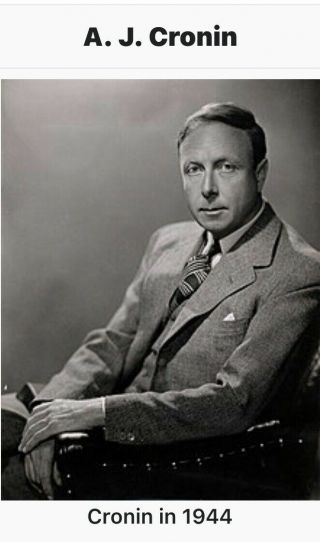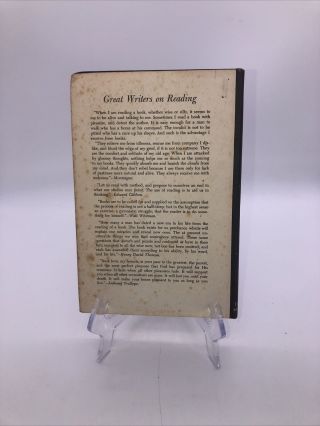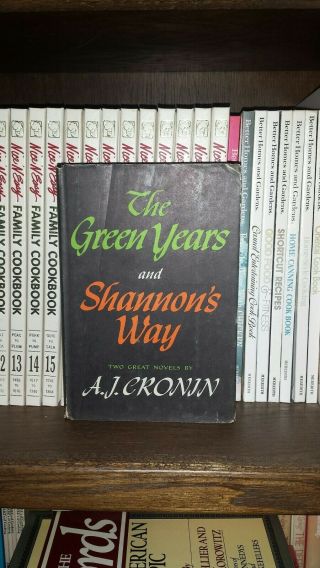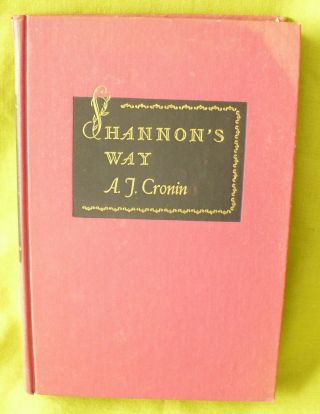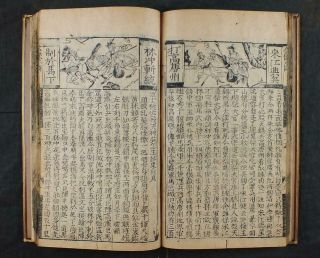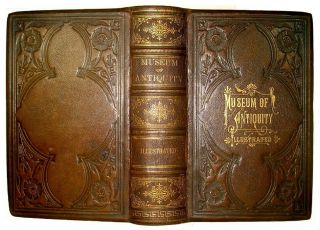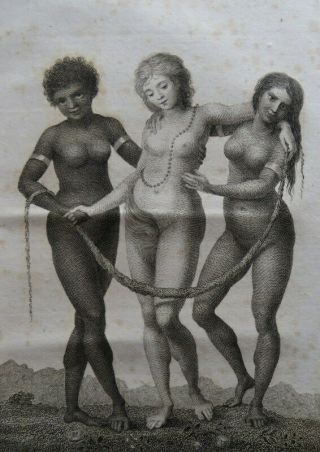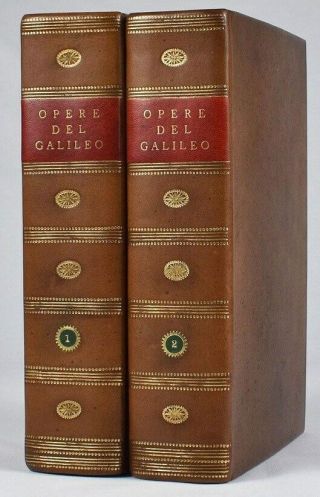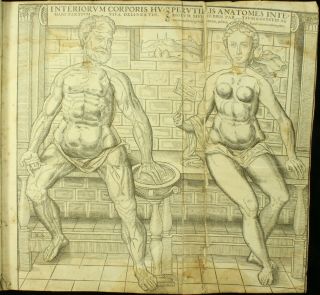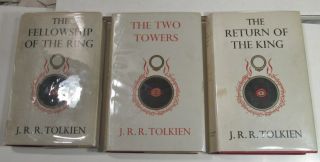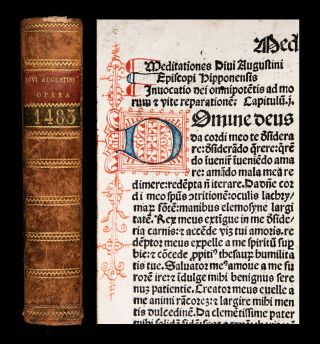The Green Years And Shannons Way, Two Great Novels A. J. Cronin (1948 HC, DJ)
Item History & Price
The Green Years is a 1944 novel by A. J. Cronin which traces the formative years of an Irish orphan, Robert Shannon, who is sent to live with his draconian maternal grandparents in Scotland. An introspective child, Robert forms an attachment to his roguish great-grandfather, who draws the youngster out of his shell with his raucous ways. The Green Years dominated The New York Times Fiction Best Sellers of ...1945 for 17 weeks.
Shannon's Way is a 1948 novel by Scots author, A. J. Cronin. It continues the story of Robert Shannon from Cronin's previous novel, The Green Years (1944)
Cronin was born in Cardross, Dunbartonshire, Scotland, the only child of a Presbyterian mother, Jessie Cronin (née Montgomerie), and a Catholic father, Patrick Cronin. Cronin often wrote of young men from similarly mixed backgrounds. His paternal grandparents had emigrated from County Armagh, Ireland, and become glass and china merchants in Alexandria. Owen Cronin, his grandfather, had had his surname changed from Cronague in 1870. His maternal grandfather, Archibald Montgomerie, was a hatter who owned a shop in Dumbarton. After their marriage Cronin's parents moved to Helensburgh, where he attended Grant Street School. When he was seven years old, his father, an insurance agent and commercial traveller, died from tuberculosis. He and his mother moved to her parents' home in Dumbarton, and she soon became a public health inspector in Glasgow.
Cronin was not only a precocious student at Dumbarton Academy, who won prizes in writing competitions, but an excellent athlete and footballer. From an early age he was an avid golfer, and he enjoyed the sport throughout his life. He also loved salmon fishing.
The family later moved to Yorkhill, Glasgow, where Cronin attended St Aloysius' College in the Garnethill area of the city. He played football for the First XI there, an experience he included in one of his last novels, The Minstrel Boy. A family decision that he should study either to join the church or to practise medicine was settled by Cronin himself when he chose "the lesser of two evils". He won a Carnegie scholarship to study medicine at the University of Glasgow in 1914. Having been absent in 1916–1917 for naval service, he graduated in 1919 with highest honours in the degree of MBChB. Later that year he visited India as ship's surgeon on a liner. Cronin went on to earn additional qualifications, including a Diploma in Public Health (1923) and Membership of the Royal College of Physicians (1924). In 1925 he was awarded an MD by the University of Glasgow for a dissertation entitled "The History of Aneurysm".
Medical career
During the First World War, Cronin served as a surgeon sub-lieutenant in the Royal Navy Volunteer Reserve before graduating from medical school. After the war he trained at various hospitals, including Bellahouston Hospital and Lightburn Hospital in Glasgow, and the Rotunda Hospital in Dublin. He undertook general practice in a small village on the Clyde, Garelochhead, and in Tredegar, a mining town in South Wales. In 1924 he was appointed Medical Inspector of Mines for Great Britain. His survey of medical regulations in collieries and his reports on the correlation between coal-dust inhalation and pulmonary disease were published over the next few years. Cronin drew on his medical experience and research on the occupational hazards of the mining industry for his later novels – The Citadel, set in Wales, and The Stars Look Down, set in Northumberland. He subsequently moved to London, where he practised in Harley Street before opening a thriving medical practice of his own in Notting Hill. Cronin was also the medical officer for the Whiteleys department store at this time and becoming increasingly interested in ophthalmology.
Writing career
In 1930 Cronin was diagnosed with a chronic duodenal ulcer and told that must take six months' complete rest in the country on a milk diet. At Dalchenna Farm by Loch Fyne he was finally able to indulge his lifelong desire to write a novel, having previously "written nothing but prescriptions and scientific papers."From Dalchenna Farm he travelled to Dumbarton to research the background of his first novel, using the files of Dumbarton Library, which still has a letter from Cronin requesting advice. He composed Hatter's Castle in the span of three months and the manuscript was quickly accepted by Gollancz, the only publishing house to which it had been submitted (apparently chosen by his wife sticking a pin into a list of publishers at random).[4] The novel was an immediate and sensational success, launching Cronin's career as a prolific author. He never returned to practising medicine.
Many of Cronin's books were bestsellers in their day and translated into many languages. Some of his stories draw on his medical career, dramatically mixing realism, romance and social criticism. Cronin's works examine moral conflicts between the individual and society, as his idealistic heroes pursue justice for the common man. One of his early novels, The Stars Look Down (1935), chronicles transgressions in a mining community in north-east England and an ambitious miner's rise to be a Member of Parliament.
A prodigiously fast writer, Cronin liked to average 5, 000 words a day, meticulously planning the details of his plots in advance. He was known to be tough in business dealings, although in private life he was a person whose "pawky humour... peppered his conversations, " according to one of his editors, Peter Haining.
Cronin also contributed stories and essays to various international publications. During the Second World War he worked for the British Ministry of Information, writing articles as well as participating in radio broadcasts to foreign countries.
Influence of The Citadel
The Citadel (1937), a tale of a mining company doctor's struggle to balance scientific integrity with social obligations, helped to promote the establishment of the National Health Service (NHS) in the United Kingdom by exposing the inequity and incompetence of medical practice at the time. In the novel Cronin advocated a free public health service in order to defeat the wiles of doctors who "raised guinea-snatching and the bamboozling of patients to an art form."Dr Cronin and Aneurin Bevan had both worked at the Tredegar Cottage Hospital in Wales, which served as one of the bases for the NHS. The author quickly made enemies in the medical profession, and there was a concerted effort by one group of specialists to get The Citadel banned. Cronin's novel, which was the highest-selling book ever published by Victor Gollancz, informed the public about corruption within the medical system, planting a seed that eventually led to reform. Not only were the author's pioneering ideas instrumental in the creation of the NHS, but the historian Raphael Samuel asserted in 1995 that the popularity of Cronin's novels played a major role in the Labour Party's landslide victory in 1945.
By contrast, one of Cronin's biographers, Alan Davies, called the book's reception mixed. A few of the more vociferous medical practitioners of the day took exception to one of its many messages: that a few well-heeled doctors in fashionable practices were extracting large amounts of money from their equally well-off patients. Some pointed to a lack of balance between criticism and praise for hard-working doctors. The majority accepted it for what it was, a topical novel. The press attempted to incite passions within the profession in an attempt to sell copy, while Victor Gollancz followed suit in an attempt to promote the book, all overlooking the fact that it was a work of fiction, not a scientific piece of research, and not autobiographical.
In the United States The Citadel won the National Book Award, Favorite Fiction of 1937, voted by members of the American Booksellers Association. According to a Gallup poll conducted in 1939, The Citadel was voted the most interesting book readers had ever read.
Shipped with USPS. See pictures for conditions of item and details Z check our other listings for more great items.



